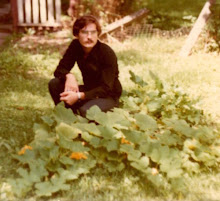Thesis Report
Things mutate while they are being written, especially big pieces. I found a copy of a "report" to file that documents what I was trying to accomplish in the argumentation of a key passage in my dissertation where I move from critique to speculation and build a model. In some ways it is better and more accessible than the thesis (in part perhaps through the use of first person singular)...
Another way to pose questions is to posit axioms. For example, to claim the play of the senses is connected to questioning or the maintenance of the interrogative mood. The central question is not how to keep questioning open but how do perception and questioning connect.
I come to the conclusion that the material practice of translation is the key for imagining a sensorium that is more than merely receptive, one that is interactive in regards to its modalities and its environment. The stumbling block in imagining such a sensorium has been the means of translating from one modality to another. Verbal language seemed to be the best candidate. However it privileged sight and hearing, the distance senses, over those of closer contact: smell, touch, and taste.
So I began again. In re-evaluating the closer contact senses, especially their action under conditions of distress or extreme pleasure, I realized that the sensorium not only is a receiver but also a dispatcher of information. The senses are not only receptors. The senses also transmit. the senses in operation provide events for interpretation. The blinking of eyes, the cocking of an ear, the flicker of a tongue, all signal.
The human senses produce events. They preserve the trace of something happening at a certain time. Events can be connected.
The transformation of discrete somatic signals into sequence explains cross-modal encoding. The pathways between sensation and narration are particularly evident in non-linguistic narrative. I am thinking here of the anthropological studies of Nancy Munn on Walbiri iconographic practices; the films of Kay Armatage, especially Storytelling; the examples collected by Jerome Rothenberg in Shaking the Pumpkin and Technicians of the Sacred. A case for the separation of narration from verbal language is also made on neurophysiological grounds. Howard Gardner in Frames of Mind offers the conjecture that "sensitivity to narrative, including the ability to communicate what has happened in a series of episodes, seems more closely tied to the pragmatic functions of language (and thus proves more fragile in cases of right-hemisphere disease) than to core syntactic, phonological, and semantic functions" (89).
and so it goes on to tell a story and to get on with the telling...
And so for day 495
21.04.2008
